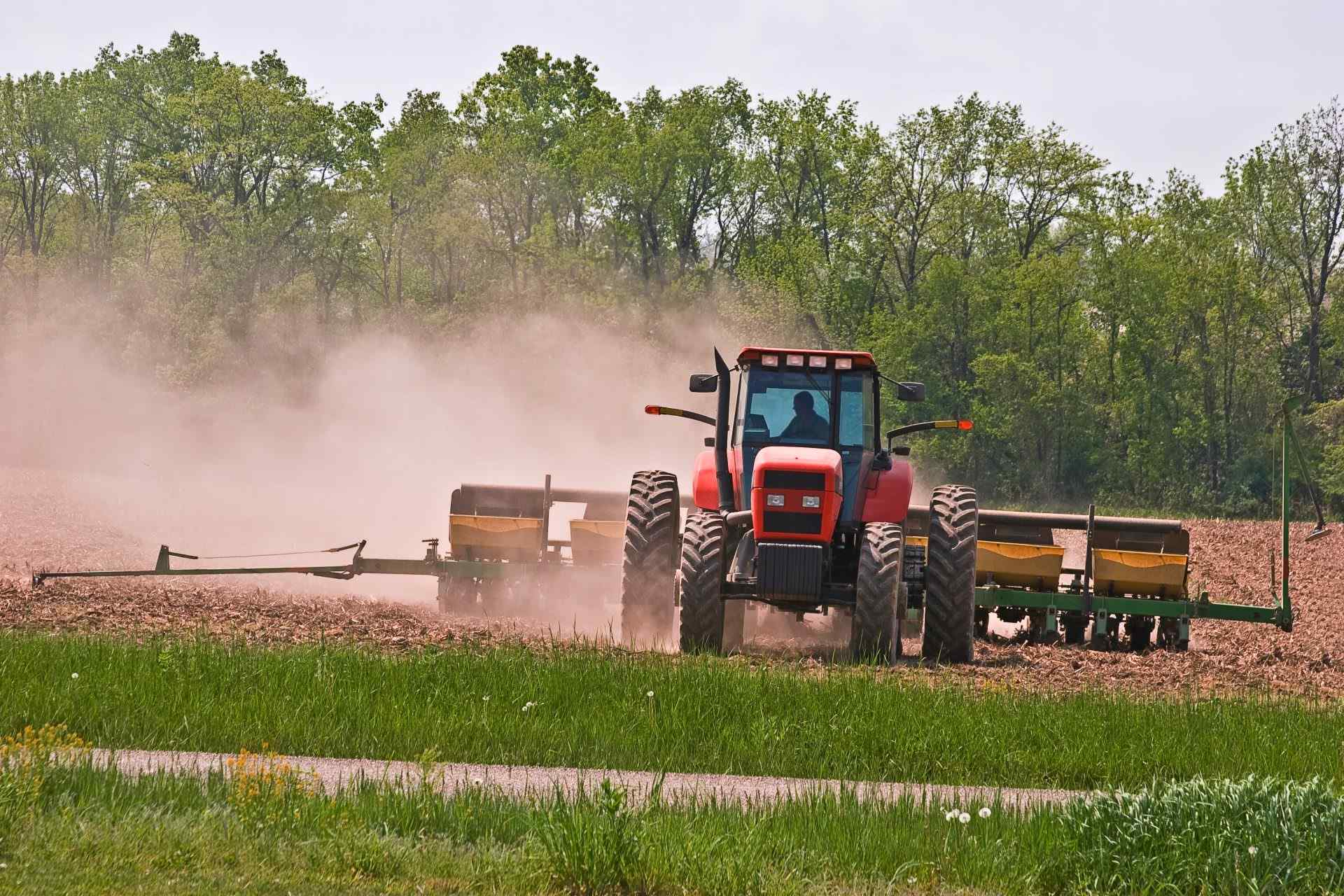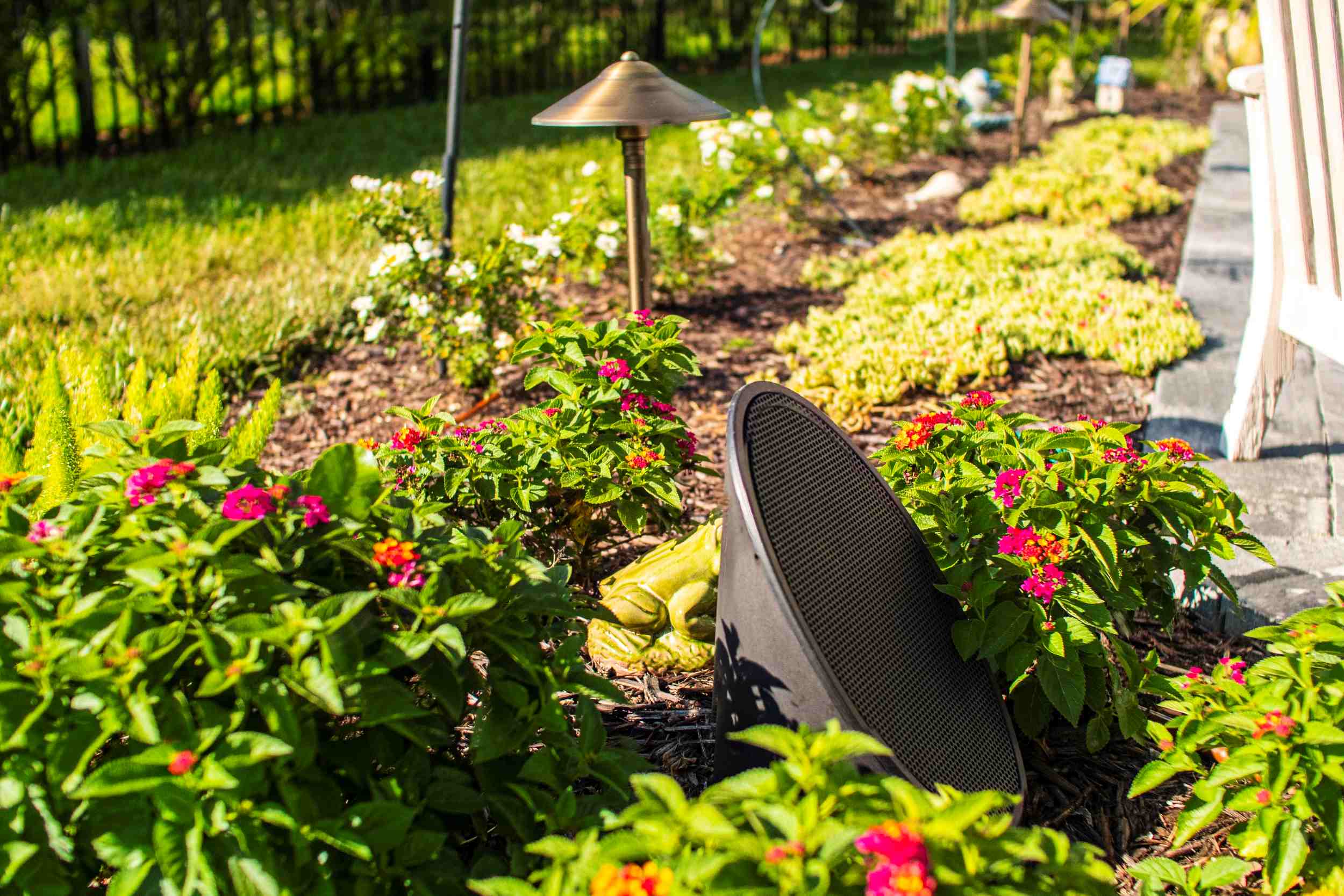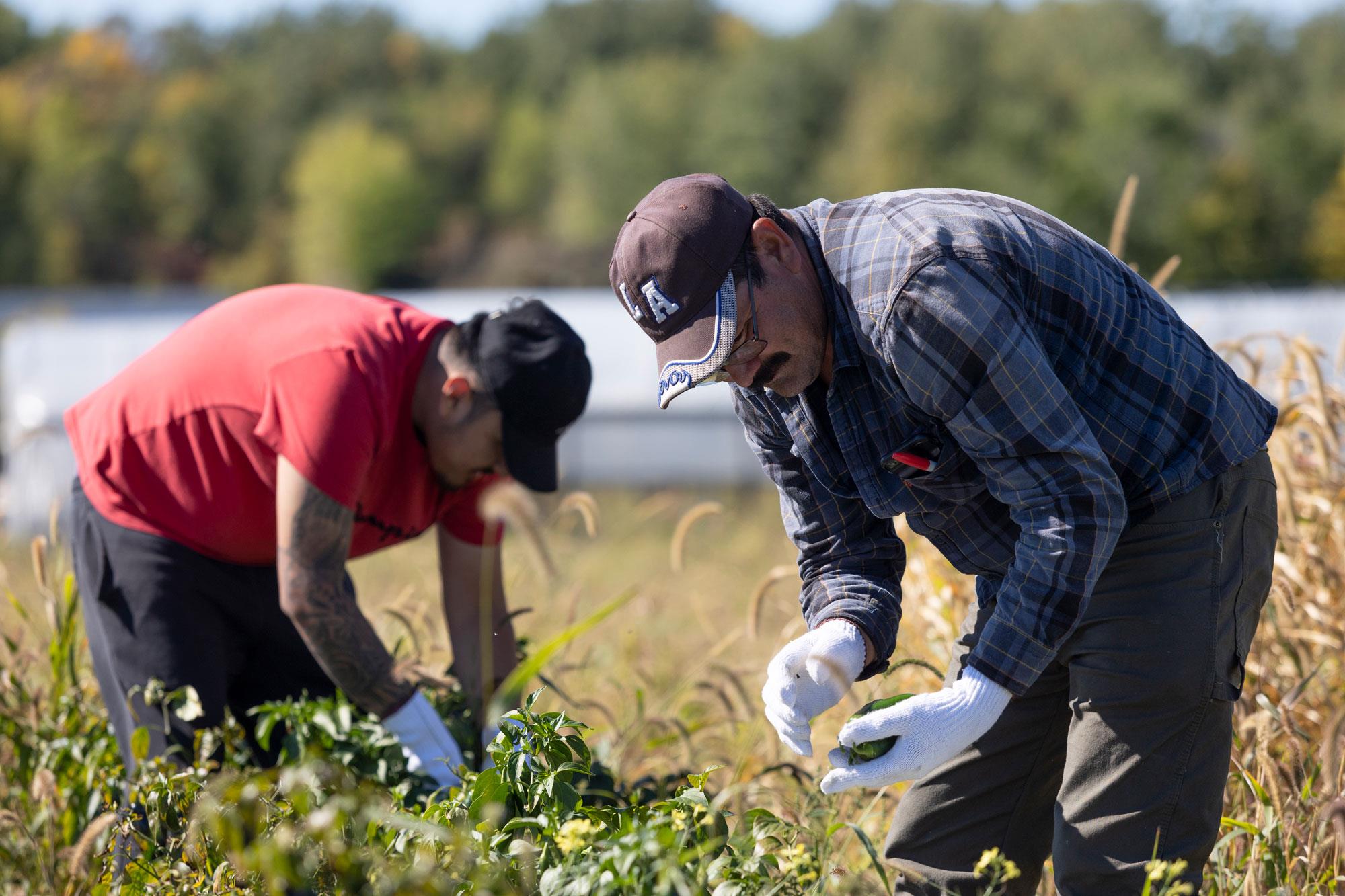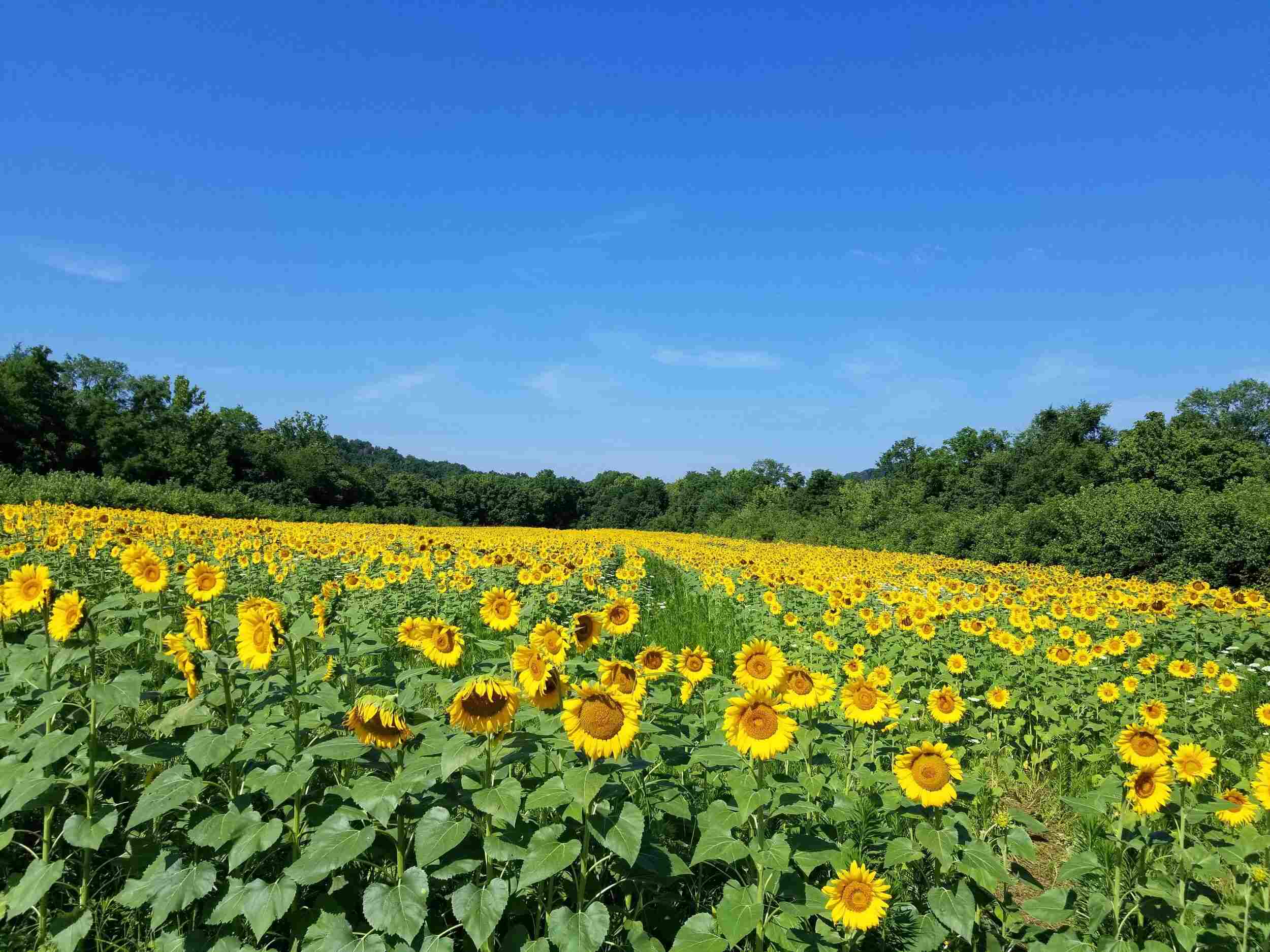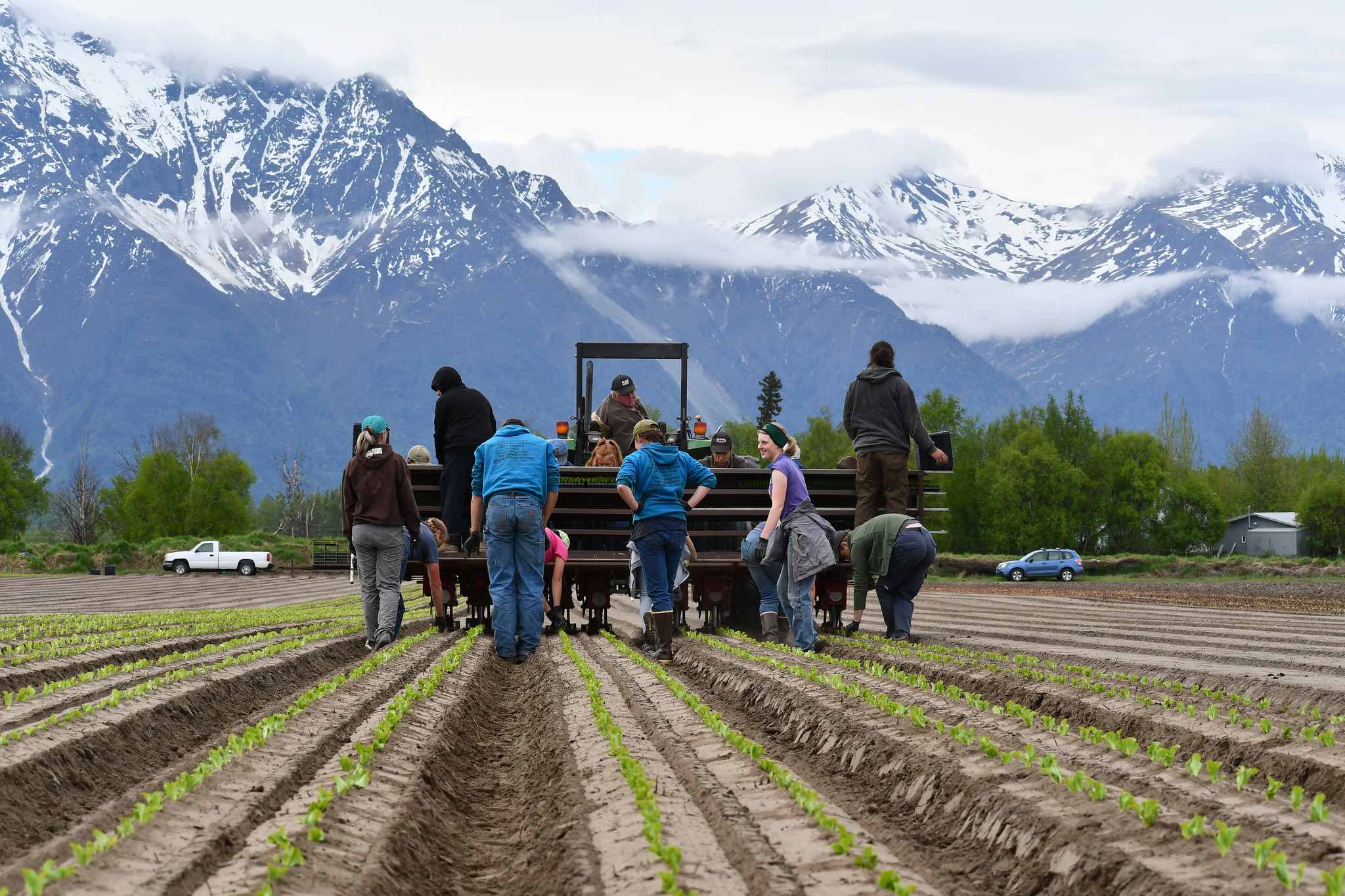Home>Gardening Basics>Understanding Soil>What Zone Is San Diego In For Planting


Understanding Soil
What Zone Is San Diego In For Planting
Modified: January 22, 2024
Discover what zone San Diego is in for planting and gain a deeper understanding of soil to ensure successful gardening.
(Many of the links in this article redirect to a specific reviewed product. Your purchase of these products through affiliate links helps to generate commission for Chicagolandgardening.com, at no extra cost. Learn more)
Table of Contents
Introduction
Welcome to the beautiful city of San Diego, where the weather is warm, the sun shines brightly, and the soil is perfect for growing a variety of plants. Whether you’re a seasoned gardener or a beginner looking to develop your green thumb, understanding the planting zones in San Diego is crucial for successful gardening.
San Diego is known for its Mediterranean climate, characterized by mild, wet winters and warm, dry summers. This unique climate creates an idyllic environment for a wide range of plant species to thrive. However, it’s important to understand the specific planting zones in San Diego to ensure that you’re choosing the right plants for your garden.
Planting zones are geographic areas determined by factors such as temperature, rainfall, and frost dates. These zones help gardeners identify which plants are most likely to grow well in their specific region. Understanding the planting zones is essential because different plants have different temperature requirements and growth patterns.
The United States Department of Agriculture (USDA) has developed a Hardiness Zone Map, which is widely used by gardeners across the country. This map divides the United States into various zones based on the average annual minimum temperature. By referring to the USDA Hardiness Zone Map, gardeners can determine which plants are suitable for their specific zone.
So, what planting zone is San Diego in? San Diego is primarily located in USDA Hardiness Zone 10a, which is characterized by an average annual minimum temperature range of 30°F to 35°F (-1.1°C to 1.7°C). However, some coastal areas of San Diego fall into Zone 10b, with slightly warmer temperatures.
When it comes to gardening in San Diego, it’s important to consider the unique climate and microclimates present in the region. While the city boasts a Mediterranean climate, different neighborhoods within San Diego may have slight variations in temperature, rainfall, and exposure to sunlight. These microclimates can affect plant growth and require careful consideration when selecting plants for your garden.
In the following sections, we will explore the climate considerations for planting in San Diego, as well as recommended plants that are well-suited for the region’s planting zone. So, let’s dive in and uncover the secrets to successful gardening in sunny San Diego!
San Diego’s Climate
San Diego boasts a Mediterranean climate, which is characterized by mild, wet winters and warm, dry summers. The city experiences an average annual rainfall of around 10 inches, with the majority of precipitation occurring from November to March. The summers in San Diego are dry and filled with sunshine, making it a haven for outdoor enthusiasts.
One of the distinct features of San Diego’s climate is the presence of microclimates. Due to its diverse topography and proximity to the coast, different neighborhoods within the city can have variations in temperature, rainfall, and wind patterns. Coastal areas tend to have a more moderate climate, with cooler summers and warmer winters, while inland areas can experience hotter summers and colder winters.
The coastal areas of San Diego benefit from the marine influence, where cool ocean breezes help moderate temperatures and reduce the risk of frost. This factor makes coastal regions ideal for growing a variety of plants that thrive in mild climates. Inland areas, on the other hand, experience greater temperature fluctuations and generally warmer conditions.
San Diego’s climate also lends itself well to year-round gardening. With its mild winters and minimal frost, gardeners in San Diego can enjoy planting and harvesting crops throughout the year. This extended growing season provides ample opportunities to explore a wide range of plants and experiment with different gardening techniques.
Another important consideration for gardening in San Diego is water availability. The region is known for its limited water resources, and responsible water usage is highly encouraged. As a result, many gardeners in San Diego practice water-wise gardening, employing methods such as drip irrigation, mulching, and selecting drought-tolerant plants. These measures help conserve water while still allowing for a vibrant and lush garden.
With its Mediterranean climate, diverse microclimates, and emphasis on water conservation, San Diego provides an exciting and rewarding environment for gardening enthusiasts. By understanding the climate and microclimates specific to your area, you can make informed decisions about plant selection and create a thriving garden that flourishes under the warm San Diego sun.
Planting Zones Defined
Planting zones are geographical areas that are defined based on specific climate factors such as temperature, rainfall, and frost dates. These zones provide valuable information to gardeners as they determine which plants are most likely to thrive in a particular region.
The United States Department of Agriculture (USDA) developed the Hardiness Zone Map, which is widely used by gardeners across the country. This map divides the United States into several planting zones based on the average annual minimum temperature. Each zone is categorized by a specific temperature range, helping gardeners select plants that can tolerate the conditions in their area.
The USDA Hardiness Zone Map has evolved over the years and is currently divided into 13 zones, ranging from Zone 1 (coldest) to Zone 13 (warmest). Zone 1 represents areas where the average minimum temperature can drop as low as -60°F (-51°C), while Zone 13 represents areas where the average minimum temperature stays above 60°F (16°C).
It’s important to note that the Hardiness Zone Map is just one tool that gardeners can use to determine plant suitability. Other factors such as rainfall, humidity, and soil conditions also play a significant role in plant success. However, the Hardiness Zone Map serves as a starting point for understanding general temperature requirements.
Within each zone, there can be microclimates that exist due to varied topography, proximity to bodies of water, or urban heat island effects. A microclimate is a small-scale climate that differs from the surrounding area, and it can influence temperature, humidity, and wind patterns. These microclimates may allow for the successful cultivation of plants that would otherwise not thrive in a specific zone.
Gardeners should also be aware of their specific USDA Hardiness Zone and any microclimates that may exist within their region to make informed decisions when selecting plants for their gardens. By understanding the planting zones and microclimates, gardeners can choose plants that are better suited to their local climate, ensuring higher chances of success and a thriving garden.
Now that we have a better understanding of what planting zones are and how they are defined, let’s explore the specific planting zone of San Diego and the climate considerations for this region.
USDA Hardiness Zone Map
The United States Department of Agriculture (USDA) has developed a Hardiness Zone Map, which is a valuable tool for gardeners across the country. This map divides the United States into different planting zones based on average annual minimum temperatures. By referencing the USDA Hardiness Zone Map, gardeners can determine which plants are likely to thrive in their specific geographic region.
The USDA Hardiness Zone Map is divided into 13 zones, ranging from Zone 1 (coldest) to Zone 13 (warmest). Each zone is identified by a specific temperature range and serves as a guideline for selecting plants that can withstand the average minimum temperatures of that zone.
The map takes into account long-term climate data to establish the zones. It considers factors such as winter cold, frost dates, and heat tolerance. Generally, Zone 1 is found in the northernmost parts of the continental United States, where temperatures can drop as low as -60°F (-51°C). Conversely, Zone 13 is found in the southernmost parts of Florida and Hawaii, where temperatures rarely dip below 60°F (16°C).
It’s essential to note that the USDA Hardiness Zone Map provides a general guideline and is not a foolproof indicator of plant survival. While it considers temperature as a primary factor, other elements such as rainfall, humidity, and microclimates can also influence a plant’s success.
Gardeners should use the USDA Hardiness Zone Map in conjunction with local knowledge and experience to make informed decisions about plant selection. Understanding your specific hardiness zone and any microclimates within your region will help you choose plants that are best suited to your local conditions.
It’s worth mentioning that the USDA regularly updates the Hardiness Zone Map to reflect changing climate patterns. As global temperatures continue to shift, certain areas may experience milder winters or more extreme weather events. As a result, plant hardiness zones may shift over time, and it’s crucial for gardeners to stay informed about the latest updates in their region.
Now that we have a good understanding of the USDA Hardiness Zone Map, let’s explore the specific planting zone of San Diego and the implications it has for gardening in the region.
San Diego’s Planting Zone
When it comes to planting zones, San Diego is primarily located in USDA Hardiness Zone 10a, with some coastal areas falling into Zone 10b. These zones are characterized by average annual minimum temperatures that range from 30°F to 35°F (-1.1°C to 1.7°C) for Zone 10a and slightly warmer temperatures for Zone 10b.
Being situated in Zone 10a means that San Diego enjoys a mild climate with minimal frost. This allows for a diverse range of plants to thrive in the region. However, it’s important to note that microclimates within San Diego can cause slight variations in temperature, rainfall, and exposure to sunlight.
In coastal areas, where the marine influence is more pronounced, the temperatures are generally cooler, and the risk of frost is lower. These areas are ideal for growing plants that prefer mild climates, such as citrus trees, avocados, and succulents. The cool ocean breeze helps moderate temperatures and creates a favorable environment for these plants to flourish.
Inland areas of San Diego experience more extreme temperature fluctuations, with hotter summers and colder winters compared to the coast. These areas are suitable for heat-loving plants that can tolerate the occasional frost, such as bougainvillea, oleander, and heat-tolerant vegetables like peppers and tomatoes.
Understanding San Diego’s planting zone and being aware of the microclimates within the region is crucial for successful gardening. By selecting plants that are well-suited to the specific conditions of your area, you can create a thriving garden that will bring you joy throughout the year.
While San Diego’s climate and planting zone provide an ideal environment for gardening, it’s essential to consider other factors such as soil quality, sunlight exposure, and water availability. Properly preparing your soil, providing adequate sunlight, and implementing efficient watering practices will contribute to the overall success of your garden.
In the next section, we will explore some climate considerations specific to planting in San Diego to help you make informed decisions when selecting plants for your garden.
Climate Considerations for Planting
When it comes to gardening in San Diego, it’s important to consider the specific climate and microclimates of the region. While San Diego enjoys a Mediterranean climate overall, there are factors to keep in mind when selecting and caring for your plants.
One key consideration is the temperature. San Diego experiences mild winters with minimal frost and warm, dry summers. This means that plants must be able to tolerate both the occasional cooler temperatures and the intense heat. Choosing plants that are well-adapted to the Mediterranean climate will ensure their success in your garden.
Water availability is another crucial factor to consider. San Diego has limited water resources and promotes responsible water usage. Consider employing water-wise gardening techniques such as drip irrigation, mulching, and selecting drought-tolerant plants. These strategies help conserve water while still allowing for a thriving garden that can withstand dry periods.
Soil quality plays a vital role in plant growth. San Diego has a variety of soil types, including clay, sand, and loam. Conducting a soil test can help determine the pH level, nutrient content, and any necessary amendments needed to improve your soil quality. Adding organic matter, such as compost, can enhance soil structure, water retention, and nutrient availability for your plants.
Sunlight exposure is another critical factor to consider when planning your garden. San Diego is known for its abundant sunshine, but some areas may have a higher amount of shade due to buildings, large trees, or neighboring structures. Understanding the sunlight patterns in your garden will help you select plants that are appropriate for the available light conditions.
Microclimates within San Diego can also impact gardening. As mentioned earlier, coastal areas tend to have cooler temperatures, while inland areas experience greater temperature fluctuations. Additionally, areas near canyons or hills may have different wind patterns. Understanding the microclimates in your specific location can help you choose the right plants and provide the optimal growing conditions.
By considering these climate factors, you can make informed decisions when selecting plants for your San Diego garden. Choose plants that are well-suited to the Mediterranean climate, practice responsible water usage, improve soil quality, and take advantage of the sunlight and microclimates in your area. These considerations will contribute to the success and longevity of your garden.
Now that we’ve explored the climate considerations for planting in San Diego, let’s discover some recommended plants that thrive in the region’s specific planting zone.
Recommended Plants for San Diego’s Planting Zone
San Diego’s mild Mediterranean climate and specific planting zone of 10a (with some coastal areas falling into 10b) offer a wide range of plant options for your garden. Here are some recommended plants that are well-suited for San Diego’s planting zone:
- Citrus Trees: San Diego’s climate is perfect for citrus trees such as oranges, lemons, and grapefruits. These trees thrive in the area’s mild winters and warm summers. They not only provide delicious fruits but also enhance the beauty of your garden with their vibrant foliage and fragrant blossoms.
- Avocado Trees: Another popular choice in San Diego is the avocado tree. With its ability to tolerate mild winters and warm summers, the avocado tree can yield a bountiful harvest of creamy and nutritious fruits. Just make sure to select the right variety for your specific microclimate, as some avocados may be more cold-sensitive than others.
- Succulents: San Diego’s dry summers make succulents an excellent choice for low-maintenance and water-wise gardening. These plants have fleshy leaves and stems that store water, allowing them to thrive in arid conditions. From colorful Echeverias to the unique Aloe vera, succulents add texture and charm to any garden.
- Bougainvillea: Known for its vibrant and showy blooms, bougainvillea is a heat-loving plant that thrives in San Diego’s warm climate. This drought-tolerant vine boasts an array of colors, from bright pinks and purples to coral and white. It’s perfect for adding a splash of tropical beauty to fences, walls, or pergolas in your garden.
- Oleander: With its ability to withstand both heat and occasional frost, oleander is a popular choice for San Diego gardens. This evergreen shrub produces clusters of showy flowers in shades of pink, red, white, and yellow. It’s an excellent option for adding color and privacy to your outdoor space.
- Heat-Tolerant Vegetables: San Diego’s warm climate allows for year-round vegetable gardening. Consider growing heat-tolerant vegetables like peppers, tomatoes, eggplants, and beans. These crops thrive in the region’s hot summers and can provide a bountiful harvest for your culinary delights.
When selecting plants for your San Diego garden, be sure to consider not only their ability to withstand the climate but also their compatibility with your specific microclimate and soil conditions. Consult with local nurseries or gardening experts to get personalized recommendations based on your garden’s unique characteristics.
By choosing these recommended plants, you can create a vibrant and flourishing garden that takes advantage of San Diego’s optimal planting zone and Mediterranean climate.
In the final section, we will wrap up our discussion on planting in San Diego and reiterate the importance of considering the specific climate and planting zone for successful gardening.
Conclusion
Gardening in San Diego offers a wonderful opportunity to cultivate a thriving garden thanks to its Mediterranean climate, specific planting zone, and diverse microclimates. By understanding the unique climate considerations of the region, you can select plants that are well-suited to San Diego’s mild winters, warm summers, and limited water resources.
San Diego falls primarily in USDA Hardiness Zone 10a, with some coastal areas classified as Zone 10b. This planting zone allows for a wide variety of plants to thrive, including citrus trees, avocados, succulents, bougainvillea, oleander, and heat-tolerant vegetables. Choosing the right plants for your garden based on their adaptability to the climate and microclimate will contribute to their success.
It’s important to consider additional factors such as soil quality, sunlight exposure, and responsible water usage when planning your San Diego garden. Improving soil quality through amendments and employing water-wise gardening techniques will contribute to the overall health and resilience of your plants.
By embracing the climate and microclimates specific to San Diego, you can create a garden that reflects the beauty and diversity of the region. Whether you have a small urban garden or a sprawling backyard, there are numerous plant options to explore and endless possibilities for creating a vibrant and sustainable outdoor space.
Remember to consult with local nurseries or gardening experts to get personalized advice and recommendations based on your specific location and garden characteristics. They can provide valuable insights and help you make informed decisions when selecting plants for your San Diego garden.
As you embark on your gardening journey in San Diego, enjoy the process of nurturing your plants and witnessing the beauty they bring to your outdoor space. Take advantage of the favorable climate and embrace the opportunities for year-round gardening that San Diego’s planting zone offers.
Now, armed with a better understanding of San Diego’s climate, planting zone, and recommended plants, go forth and create a garden that thrives under the warm San Diego sun!

